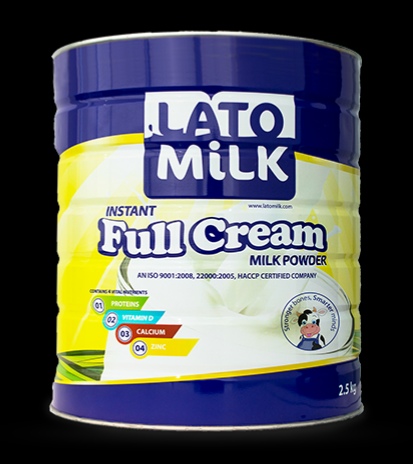Kenya’s Dairy Authority has initiated measures to bolster its milk reserves and stabilize prices during periods of scarcity.
Akankiza Mpiira, the Executive Director of Uganda’s Dairy Development Authority (DDA) confirmed that Kenya is set to increase the issuance of milk importation permits specifically for milk powder from Uganda.
This move comes in response to previous restrictions on milk powder imports, which are now being eased to address potential shortages in the Kenyan market.
According to DDA, Pearl Diaries and Amos Diaries are positioned to seize the opportunity in the Kenyan milk powder market however, their export volumes to Kenya remain limited, as Kenyan authorities continue to prioritize the market for liquid milk over powdered alternatives, particularly during periods of milk overproduction.
Industry experts emphasize the significant impact of milk powder imports on the liquid milk market, with each kilogram of powdered milk exclusion creating demand for approximately 10 litres of liquid milk.
“Liquid milk exports are accepted in Kenya but milk powder is restricted. This is because each kilogramme of powdered milk stopped, the market for 10 litres of liquid milk is protected,” Akankiza said.
Despite the unpredictability of the Kenya export market, the country’s appetite for Ugandan milk remains high. South Sudan, Tanzania, DR Congo, Rwanda, Burundi and Somalia closely follow in that order. Combined, Uganda exports 86.6 per cent per cent of its milk within the EAC market.
Akankiza Mpiira said Kenya’s change of heart is a blessing for Uganda’s milk powder producers. They ramped up production with hopes of exporting to Algeria, but a year after the market was secured no powder has left the Kampala and Mbarara powder milk plants for Algiers.
Ugandan powder milk makers have adopted a wait-and-see attitude towards the Algerian market, discouraged by the low prices the buyers in Algerian are offering.
“The price of powder milk is too low for manufacturers to recover the production and delivery costs,” a dairy industry expert explained, saying it has become expensive to deliver the milk.
The continued attacks on commercial ships by Houthi rebels in the Red Sea and the Gulf of Aden have forced shippers to reroute vessels, leaving the Mombasa port to off the South African coast to avoid a shorter route off the Somalia coast to the Gulf, which eats into margins of the milk processors.
Information from maritime players indicates that the cheapest way to ship the milk from Kampala is by loading it on a truck from Kampala to Mombasa port, transfer to a vessel, and ship to Algiers port.
The route’s total transit time is estimated at around 30 days, including loading and unloading operations at origin and destination as well as terminal handling at transit terminals freight rate of $7,003.
Uganda manufacturers foresee a hard landing in the Algeria milk market due to low price offerings for their products, amid high freight costs fueled by attacks on ships on the Red Sea and Gulf of Aden in the Middle East by Houthi rebels.
In Uganda, the average ex-factory price of milk powder is Ush18,500 ($4.8) per kg, which means the processors need to more than double the price of the product in Algeria to post a profit.
“The processors foresee smaller margins. That is why they are delaying to ship the milk to Algeria,” Mpiira said.
The Uganda milk industry was betting on the $500 million milk export market in Algeria after the country’s liquid milk production crossed 3.8 million metric tonnes in the full year ending December 31, 2023.
Despite the market entry challenges, milk powder is now the most exported product accounting for approximately 54.2 per cent of the total exports followed by UHT at 33.1 per cent, trading data from DDA indicates.
Uganda state minister for animal industry Bright Rwamirama says the dairy industry is contributing significantly to Uganda’s economy, providing livelihoods for millions of people and contributing to food security and nutrition.
The sector contributes 6.5 percent of the country’s agricultural GDP. The prevailing supportive investment climate has equally contributed to a steady inflow of foreign direct investment in the large-scale dairy processing category.



